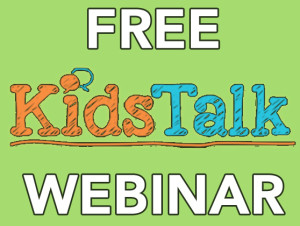
People are changed not by coercion or intimidation but by example.
John C. Maxwell
“After you graduate from college and get a job, you’ll have more money,” my grandmother told me, “but you won’t be any happier. You’ll just have a new set of problems.”
The years validate the accuracy of my grandmother’s advice. I’m no happier watching a big screen home theater today than munching popcorn in front of a thirteen-inch black and white TV in my college days.
Parents report that their biggest source of conflict within their family revolves around money issues, such as unexpected bills, overspending, savings, retirement and college planning.
Communication about money is difficult for many reasons; one being that control of money and power are interwoven. Plus, we may have learned that polite people don’t discuss money.
Visiting with parents whose child is having behavior or learning problems, I often times observe stress within the marriage. The child’s difficulties may act as a pressure valve within the family. Parent conflicts about money management factor into the child’s emotional stability, a stability that creates the foundation for learning and achievement.
It’s not fair that in the game of life as young adults we are trying to figure out many things at once—getting along with our life partner, raising children, and planning for our future. A weak understanding of finance and basic economics can cause long-term difficulties for our families.
“Money doesn’t solve all your problems,” my dad used to say, “but it sure gives you a lot more options.” All of us can use more options.
Money is a tool that we need to be taught to use, but unfortunately, we learn by trial and error, the old school of hard knocks.
Only 26 percent of 13-21 year-olds report that their parents had actively taught them how to manage money. 79 percent of students between the ages of 16 to 22 have never taken a personal finance course in school. Students graduate with more debt than our first home cost thirty years ago.
Here are three questions that many people answer incorrectly:
- If you put $100 a month in an IRA that earns 6% annually, how much money will you have after 40 years? A) $50,000, B) $150,000, C) $200,000, or D) $360,000
Answer: c) $200,000
- If you have a credit card balance of $5,000 and make the typical minimum monthly payment, approximately how much will you pay in total? A) $6,000, B) $10,000, C) $14,000, D) $19,000
Answer: D) $19,000
- What is the biggest factor in determining your credit rating with banks? A) income level, B) home ownership, C) amount of debt, D) FICO score
Answer: D) FICO score
Our children face financial challenges as pension plans change to individual retirement accounts, health benefits become health savings accounts, and mortgages are 40-years.
We need to be savvy to help our children learn to become financially self-sufficient. How should we begin?
Teach savings from around age three. Financial consultants recommend that we use three piggy banks, plus a savings account. 20 percent should go into a long-term savings account for goals that are longer than a year away, for example college. Another 20 percent goes into a piggy bank, and is for short-term savings, such as saving for a bicycle. The next piggy holds 10 percent for philanthropy. Day-to-day expenditures, the remaining 50 percent, go into the third piggy bank. Some advisors suggest calling the short-term savings “taxes” to foster true understanding of where money goes.
Allow your children to make mistakes. Give your children opportunities to make buying decisions about toys and clothes. From the consequence of making an unwise purchase, your children will learn to be judicious with their resources. They’ll see that “all that glitters is not gold.”
Lead by example. As parents we spend more time teaching our children how to ride a bike than showing them how to financially plan to achieve their goals. Develop a financial plan for your family and teach your children how to use money as a tool to realize their dreams.
In the end, as my grandmother said, it’s not how much money you have, but how you decide to use your money.

